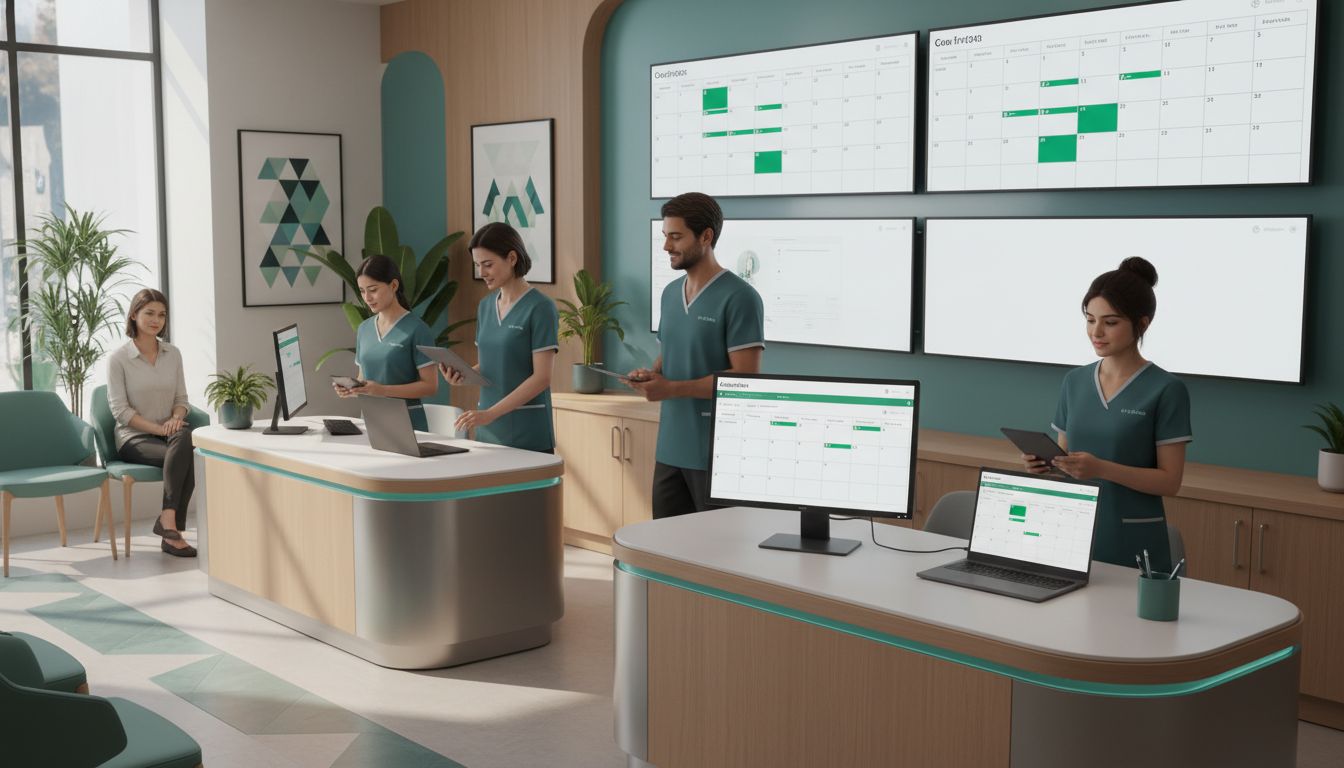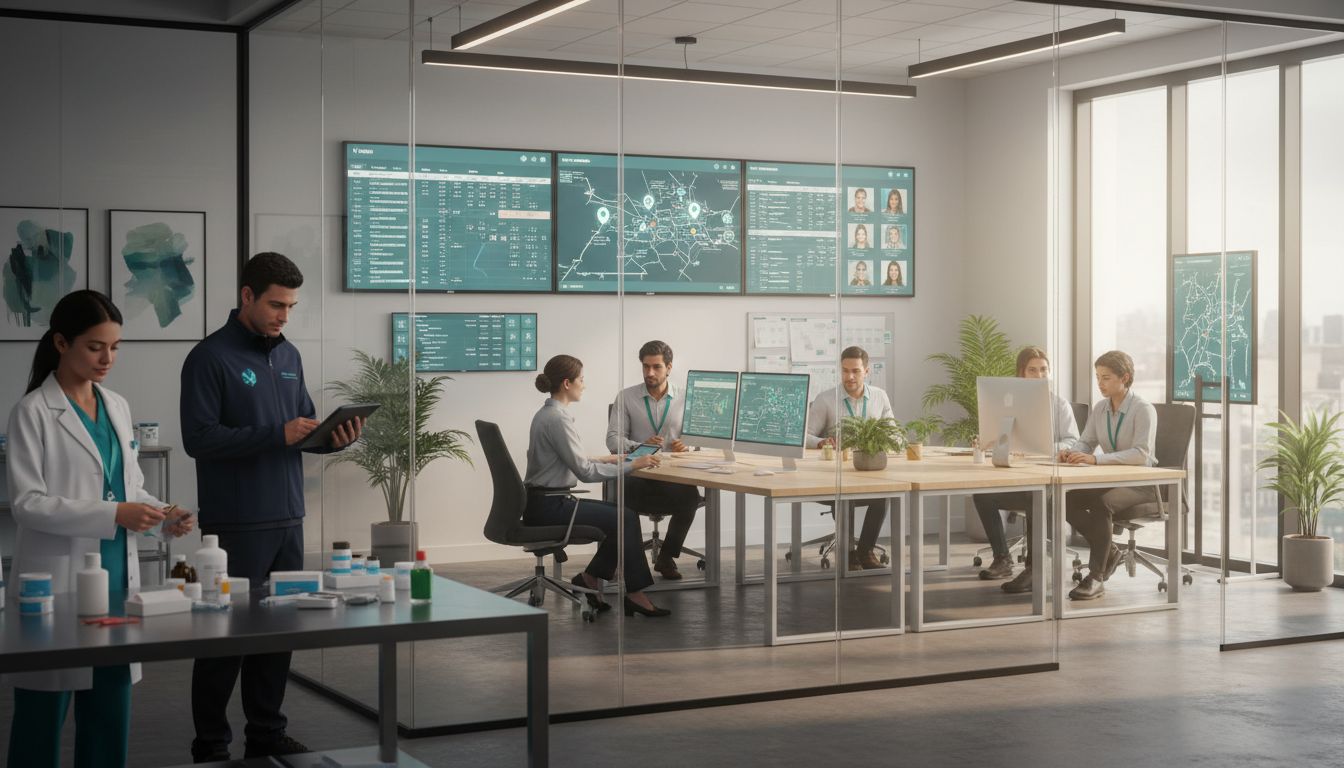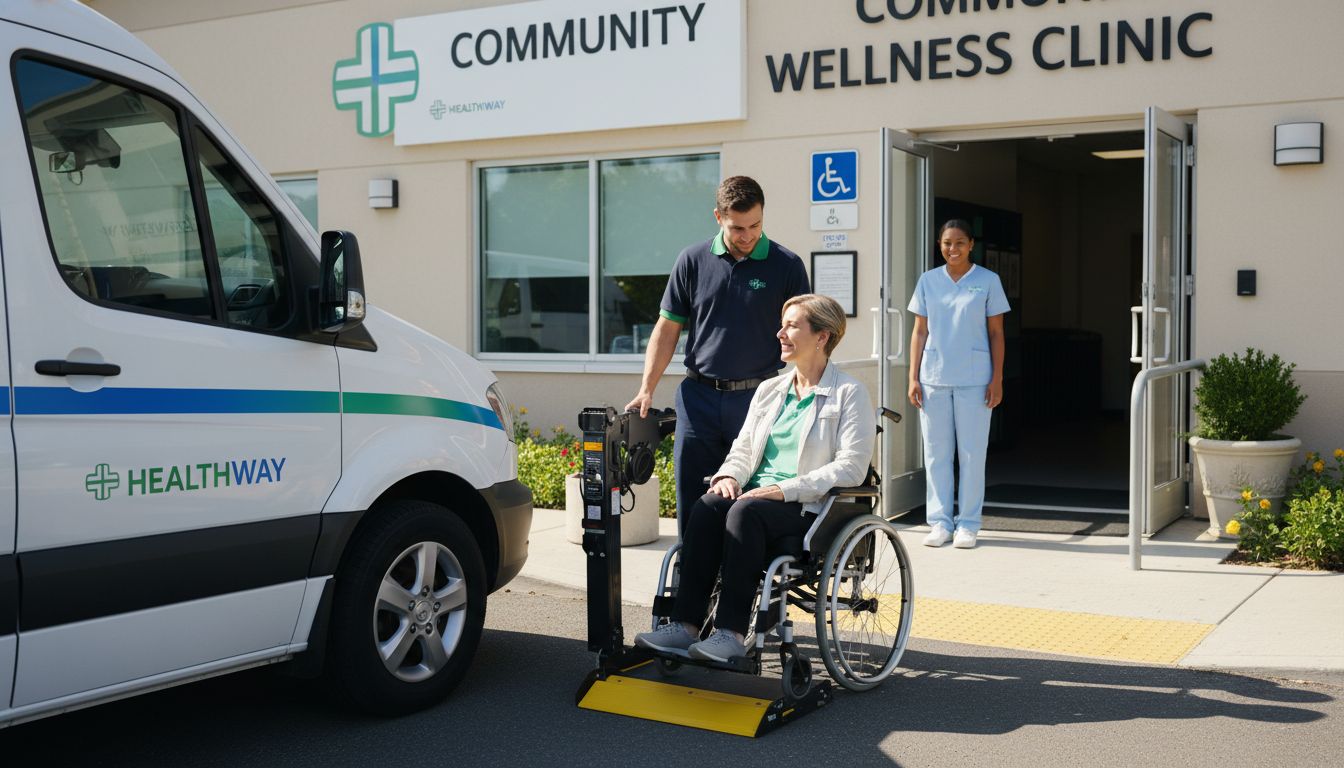Healthcare Workflow Optimization Strategies for 2025

Healthcare teams are under more pressure than ever as rising demands meet limited resources. Doctors in intensive care units now spend only 15% to 30% of their time with patients, while the rest is swallowed up by paperwork and admin. That sounds grim, right? Most people think cutting-edge devices or new facilities will fix the system. Actually, the best results in 2025 are coming from workflow strategies that rewire how people, tech, and teams work together.
Table of Contents
- Understanding Healthcare Workflow Challenges
- Key Technologies For Workflow Optimization
- Best Practices For Multisector Collaboration
- Measuring And Sustaining Workflow Improvements
Quick Summary
| Takeaway | Explanation |
|---|---|
| Reduce Administrative Burden | Streamline documentation processes to increase direct patient care time by healthcare professionals. |
| Address Workforce Shortages | Focus on strategies to recruit and retain adequate medical staff while bridging skill gaps. |
| Leverage AI for Efficiency | Integrate artificial intelligence to enhance decision-making and automate routine tasks in healthcare. |
| Implement Comprehensive Measurement Frameworks | Develop frameworks to measure performance and adapt workflows in real-time based on data insights. |
| Encourage Multisector Collaboration | Foster partnerships across various sectors to address healthcare challenges collaboratively and inclusively. |
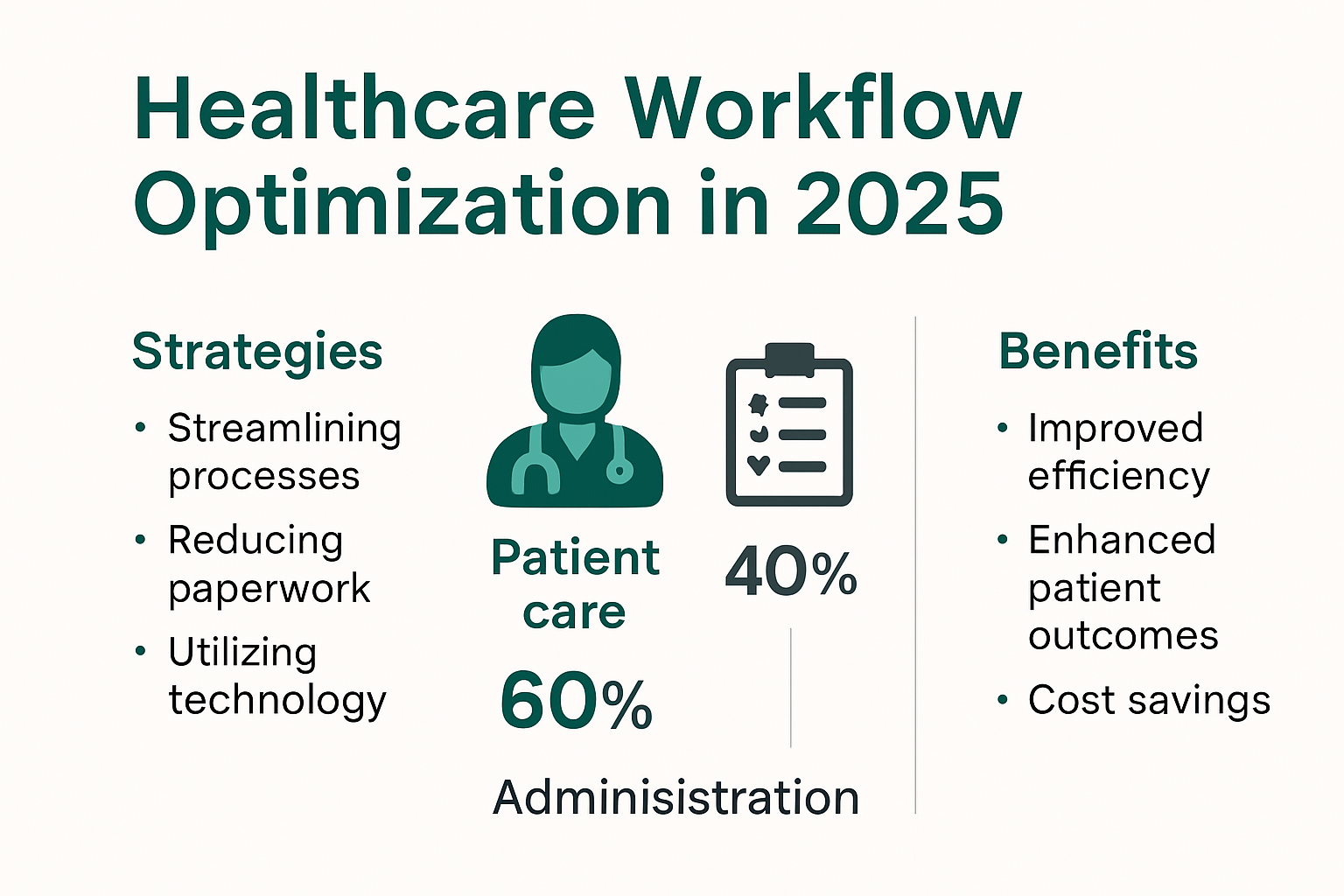
Understanding Healthcare Workflow Challenges
Healthcare workflow optimization represents a critical challenge facing medical systems in 2025, with complex operational barriers significantly impacting patient care and organizational efficiency. The intricate landscape of healthcare delivery demands a comprehensive understanding of the systemic challenges that impede smooth operational processes.
Administrative Burden and Time Inefficiencies
Healthcare professionals are increasingly overwhelmed by administrative tasks that consume a disproportionate amount of their professional time. Deloitte research reveals a startling statistic: doctors in intensive care units spend merely 15% to 30% of their time directly interacting with patients, with the remaining hours dedicated to documentation, record management, and bureaucratic processes.
This administrative overhead creates multiple critical challenges:
- Reduced Patient Interaction: Less direct patient care time compromises the quality of medical services.
- Professional Burnout: Excessive paperwork and documentation lead to increased stress and potential career dissatisfaction.
- Operational Inefficiency: Time spent on non-clinical tasks represents significant economic waste for healthcare organizations.

Workforce Shortages and Skill Gaps
The healthcare industry faces unprecedented workforce challenges that directly impact workflow effectiveness. American College of Nursing projections indicate a critical shortage of medical professionals, with an anticipated deficit of 78,000 registered nurses and 29,200 advanced practice registered nurses by 2025. These shortages create substantial strain on existing healthcare systems, forcing remaining staff to manage increased workloads and complex patient care scenarios.
Moreover, workforce gaps extend beyond numerical shortages. The evolving technological landscape requires continuous skill development and adaptation. Healthcare professionals must simultaneously manage patient care, navigate complex technological systems, and maintain regulatory compliance.
Security and Human Error Risks
Human-induced errors represent a significant challenge in healthcare workflow optimization. Research analyzing security breaches highlights that a substantial proportion of systemic vulnerabilities stem from human practices rather than purely technological weaknesses. These errors can manifest in various domains, including patient data management, communication protocols, and administrative procedures.
Key risk areas include:
- Data Management: Inconsistent record-keeping and documentation practices
- Communication Gaps: Ineffective information transfer between departments
- Compliance Challenges: Difficulties maintaining stringent regulatory standards
Understanding these multifaceted workflow challenges is crucial for developing targeted optimization strategies. By recognizing the complex interplay between administrative processes, workforce dynamics, and human factors, healthcare organizations can design more resilient and efficient operational frameworks.
To better visualize the primary workflow challenges healthcare organizations face in 2025, the table below organizes the main issues, their impacts, and key contributing factors.
| Challenge | Impact on Workflow | Key Contributing Factors |
|---|---|---|
| Administrative Burden | Less patient interaction, slower processes | Excessive paperwork, documentation |
| Workforce Shortages & Skill Gaps | Increased workload, service limitations | Staff deficits, need for new tech skills |
| Security & Human Error Risks | Data breaches, compliance failures | Human errors, communication gaps |
Key Technologies for Workflow Optimization
Healthcare workflow optimization in 2025 demands sophisticated technological interventions that transcend traditional operational approaches. As medical systems face increasing complexity, cutting-edge technologies emerge as critical enablers of efficiency, precision, and patient-centered care.
Artificial Intelligence and Machine Learning Integration
Artificial intelligence represents a transformative force in healthcare workflow optimization. Healthcare research indicates emerging technologies like AI-powered patient triage systems and predictive analytics are revolutionizing clinical decision-making processes. These intelligent systems can analyze vast datasets, identify patterns, and provide real-time recommendations that significantly reduce administrative burdens.
Key AI applications include:
- Automated Diagnostic Support: Machine learning algorithms that assist clinicians in rapid and accurate diagnostic processes
- Predictive Resource Allocation: Systems that forecast patient volumes and optimize staffing requirements
- Risk Stratification: Advanced algorithms identifying high-risk patients requiring immediate intervention
Electronic Health Record Enhanced Platforms
Modern Electronic Health Record (EHR) platforms have evolved beyond basic documentation tools. The U.S. Agency for Healthcare Research and Quality emphasizes the critical role of digital patient tracking and standardized communication protocols in streamlining care team coordination. Advanced EHR systems now integrate seamless communication channels, allowing healthcare professionals to share patient information securely and efficiently.
Critical EHR technological advancements include:
- Interoperability: Robust systems enabling cross-platform data exchange
- Real-Time Updates: Instant patient status modifications accessible to entire care teams
- Integrated Communication Tools: Secure messaging and collaboration features
Telehealth and Remote Monitoring Technologies
Telehealth platforms have transitioned from alternative solutions to fundamental components of modern healthcare workflow optimization. These technologies enable healthcare providers to extend patient care beyond traditional physical boundaries, reducing operational costs and improving accessibility. Advanced remote monitoring tools now integrate sophisticated sensors, wearable devices, and AI-driven analytics to provide continuous patient health tracking.
Emerging telehealth technological capabilities include:
- Virtual Consultation Platforms: High-definition video conferencing with integrated medical record access
- Remote Patient Monitoring: Wearable devices transmitting real-time health metrics
- Digital Triage Systems: AI-powered platforms assessing patient symptoms and recommending appropriate care pathways
By strategically implementing these technological solutions, healthcare organizations can transform workflow challenges into opportunities for enhanced efficiency, improved patient outcomes, and more responsive medical services. The convergence of artificial intelligence, advanced digital platforms, and innovative communication technologies represents the future of healthcare workflow optimization.
The following table summarizes the main technologies referenced, their core features, and the workflow benefits they provide in 2025 healthcare settings.
| Technology | Core Features | Workflow Benefits |
|---|---|---|
| Artificial Intelligence & ML | Automated triage, predictive analytics, diagnostics | Faster decisions, less paperwork |
| Advanced EHR Platforms | Interoperable data, real-time updates, secure messaging | Smoother coordination, fewer errors |
| Telehealth & Remote Monitoring | Virtual consults, wearables, AI symptom assessment | Broader access, reduced costs |
Best Practices for Multisector Collaboration
Multisector collaboration has emerged as a critical strategy for addressing complex healthcare challenges, requiring sophisticated approaches that transcend traditional organizational boundaries. Healthcare workflow optimization demands unprecedented levels of coordination and strategic partnership across diverse sectors and stakeholders.
Leadership and Strategic Alignment
The National Academy for State Health Policy emphasizes the critical importance of developing shared leadership commitments and strategic visions. Successful multisector collaboration hinges on establishing clear, mutually understood objectives that align organizational goals while maintaining individual sector strengths.
Key leadership strategies include:
- Shared Vision Development: Creating comprehensive frameworks that articulate collective healthcare improvement goals
- Sustainable Funding Models: Designing innovative investment strategies that support cross-sector initiatives
- Equity-Focused Approaches: Ensuring collaborative efforts address systemic disparities and community needs
Technology and Data Integration
Effective multisector collaboration requires robust technological infrastructure that enables seamless information exchange. The American Hospital Association highlights the critical role of technology in facilitating communication and coordinating care across different organizational systems.
Technological integration strategies encompass:
- Interoperable Data Systems: Developing platforms that enable secure, real-time information sharing
- Standardized Communication Protocols: Establishing consistent data exchange mechanisms
- Advanced Analytics Tools: Implementing systems that transform raw data into actionable insights
Community-Driven Collaborative Models
The Commonwealth Fund underscores the transformative potential of community-centered collaboration models. These approaches prioritize integrating diverse stakeholder perspectives, particularly those from traditionally marginalized communities, to design more responsive and effective healthcare solutions.
Essential community collaboration principles include:
- Inclusive Decision-Making: Creating platforms that amplify community voices
- Data-Driven Storytelling: Using personal narratives and quantitative evidence to drive systemic change
- Adaptive Partnership Frameworks: Developing flexible collaboration models that can evolve with changing healthcare landscapes
Successful multisector collaboration represents more than a strategic imperative it is a fundamental redesign of how healthcare systems conceptualize and deliver comprehensive care. By breaking down traditional silos, leveraging advanced technologies, and centering community perspectives, healthcare organizations can create more responsive, efficient, and equitable workflow optimization strategies.
Measuring and Sustaining Workflow Improvements
Healthcare workflow optimization requires more than initial implementation strategies it demands robust, systematic approaches to measuring, tracking, and sustaining continuous improvement. Organizations must develop comprehensive frameworks that enable dynamic performance assessment and ongoing organizational adaptation.
Performance Measurement Frameworks
Research published in the Journal of Medical Systems highlights the critical importance of developing sophisticated performance measurement frameworks for healthcare workflow improvements. These frameworks must transcend traditional metric tracking, incorporating multidimensional assessment strategies that capture qualitative and quantitative insights.
Key performance measurement components include:
- Comprehensive Metrics: Developing holistic indicators that assess operational efficiency, patient outcomes, and staff satisfaction
- Real-Time Analytics: Implementing dynamic data collection systems that provide immediate workflow performance insights
- Comparative Benchmarking: Establishing industry-standard performance comparisons to contextualize organizational progress
Continuous Improvement Methodologies
Successful workflow optimization requires adopting structured continuous improvement methodologies that enable systematic refinement and adaptation. These approaches emphasize iterative learning, stakeholder feedback, and proactive intervention strategies.
Critical continuous improvement strategies encompass:
- Feedback Loop Mechanisms: Creating robust systems for capturing and integrating frontline staff and patient experiences
- Rapid Cycle Improvement: Implementing agile methodological approaches that allow quick identification and resolution of workflow bottlenecks
- Cross-Functional Learning: Developing platforms for knowledge sharing and best practice dissemination across different organizational units
Sustainability and Change Management
Sustaining workflow improvements demands sophisticated change management approaches that address human factors, organizational culture, and technological integration. Successful implementation requires a comprehensive strategy that balances technological innovation with human-centered design principles.
Key sustainability strategies include:
- Cultural Alignment: Developing organizational cultures that embrace continuous learning and adaptive methodologies
- Training and Development: Creating ongoing educational programs that support technological and procedural workflow transformations
- Stakeholder Engagement: Designing inclusive change management processes that actively involve healthcare professionals at all organizational levels
Measuring and sustaining workflow improvements represents a complex, multifaceted challenge that requires sophisticated, adaptive approaches. By developing comprehensive performance frameworks, embracing continuous improvement methodologies, and prioritizing human-centered change management, healthcare organizations can create resilient, evolving workflow optimization strategies that respond dynamically to emerging challenges and opportunities.
Frequently Asked Questions
What are the main challenges in healthcare workflow optimization for 2025?
Healthcare workflow optimization faces challenges such as administrative burdens, workforce shortages, skill gaps, and security risks associated with human errors. These challenges hinder efficient patient care and organizational effectiveness.
How can artificial intelligence improve healthcare workflows?
Artificial intelligence can streamline healthcare workflows by automating routine tasks, providing diagnostic support, and optimizing resource allocation through predictive analytics, which reduces administrative burdens and enhances decision-making.
What role does telehealth play in optimizing healthcare workflows?
Telehealth significantly optimizes healthcare workflows by enabling remote consultations, continuous patient monitoring, and access to medical care beyond physical facilities, thereby reducing operational costs and increasing accessibility for patients.
How can healthcare organizations measure the success of workflow optimization strategies?
Healthcare organizations can measure the success of workflow optimization strategies through comprehensive performance measurement frameworks that include both qualitative and quantitative metrics, real-time analytics, and benchmarking against industry standards.
Unlock Seamless Healthcare Workflows with VectorCare
Are you tired of seeing talented healthcare staff bogged down by administrative tasks and outdated processes? The strategies outlined in our article reveal a common thread: inefficiency and manual coordination drain precious time and lead to burnout. That is where automation and real-time solutions become essential. Imagine patient logistics, scheduling, and communication all coordinated seamlessly, so providers and frontline teams can focus more on care and less on paperwork.
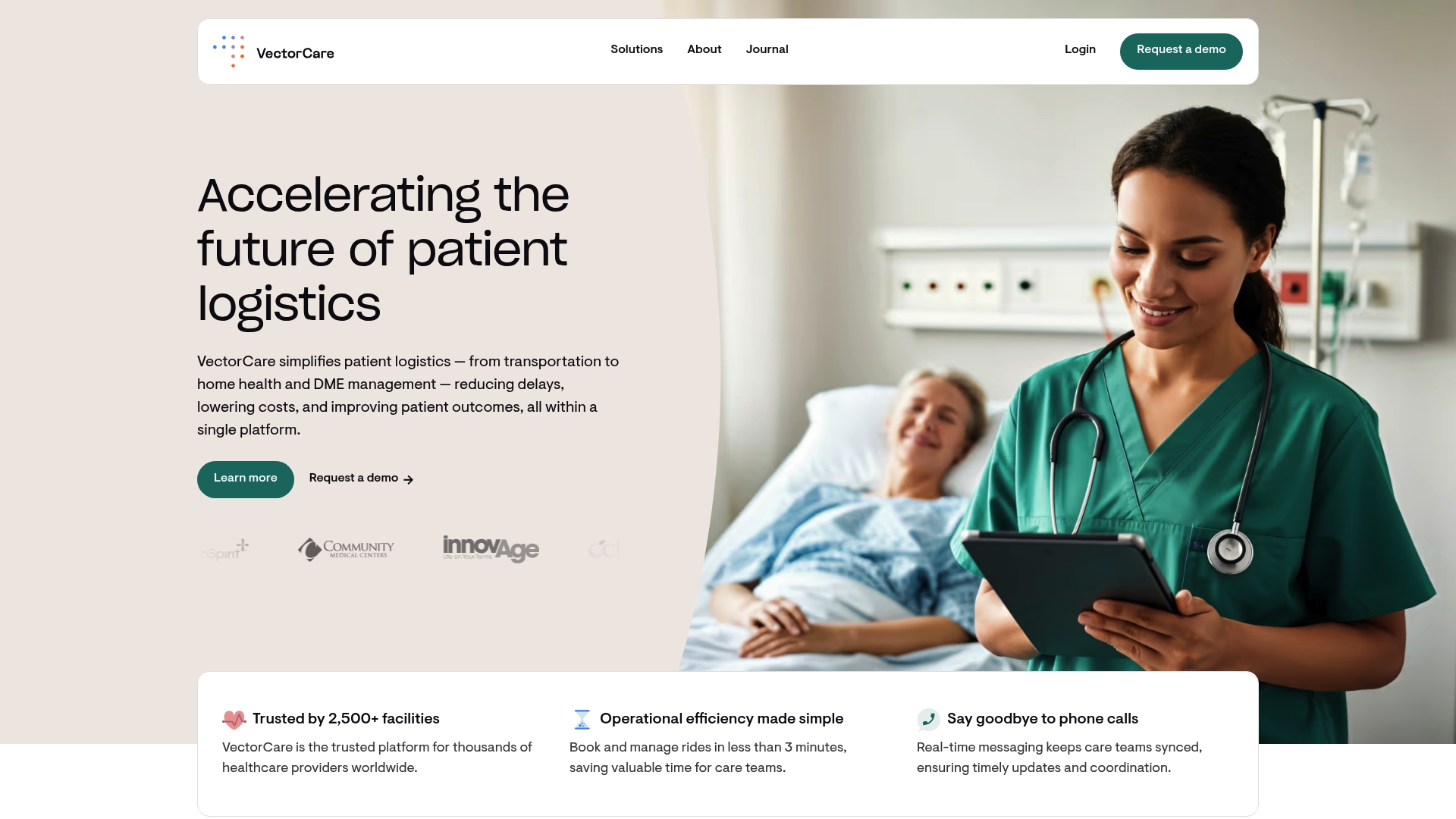
Do not let outdated workflows hold your organization back in 2025. Experience how VectorCare creates immediate impact with automated dispatch, secure data sharing, and actionable insights for vendors, payers, and caregivers. See measurable reductions in cost and delays by visiting VectorCare’s Healthcare Logistics Platform. Ready to reduce administrative burden and improve patient outcomes? Explore our integrated digital suite today and see the difference in real time efficiency.
